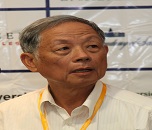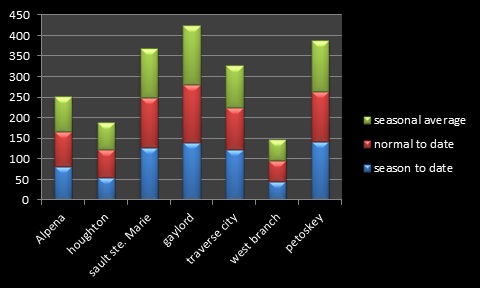Sessions/Tracks
Track 1: Earth Science
Earth science or geoscience includes all fields of science associated with the world Earth. This is often a branch of science managing the physical constitution of the world and its atmosphere. Earth science is that the study of our planet’s physical characteristics, from earthquakes to raindrops, and floods to fossils. The numerous purpose of the world sciences is to acknowledge the present capabilities and therefore the past evolution of the world and to use this information, whereby acceptable, for the advantage of human race. Some earth scientists use their information of the world to find and develop energy and natural resource. Others study the impact of human action on Earth's environment, and style ways to protect the world.
Earth sciences graphics software
Environmental Geo-science
Glossary of geology terms
Structure of the Earth
GEO-LEO (GEO Library Experts Online)
Related Societies:
Europe : European Desalination Society, European Geography Association - for Students and Young Geographers, European Geosciences Union, European Speleological Federation, European Water Association, Group on Earth Observations, International Association for Engineering Geology and the environment
Asia: Asia Oceania Geosciences Society, Australian Clay Minerals Society, Australian Geoscience Council, Australian Institute of Geoscientists, Australian Society of Exploration Geophysicists, Chinese Geoscience Union, Chinese Academy of Geological Sciences, Chinese Geoscience Union
USA: American Geosciences Institute, American Institute of Hydrology, American Institute of Professional Geologists, American Rock Mechanics Association, American Gem Society, American Association of Petroleum Geologists
Track 2: Climate Change
Climate change also called global warming, refers to the rise in average surface temperatures on Earth. Climatology, the science of Climate and its relation to plant and animal life, is important in many fields, including agriculture, aviation, medicine, botany, zoology, geology, and geography. Changes in Climate affect, for example, the plant and animal life of a given area. Climatology, the science of Climate and its relation to plant and animal life, is important in many fields, including agriculture, aviation, medicine, botany, zoology, geology, and geography. Changes in Climate affect, for example, the plant and animal life of a given area.
Climate Change & Climatology
CO2 Responsible Climate Change
Sustainability & Climate Change
Climate Change Law & Policy
Space Monitoring of Climate Variables
Climate Change Economics
Climate Change Challenges
Effective Adaptation
Risks of Climate Change
Climate Hazards
CO2 Capture and Sequestration
Carbon Cycle
Climate Change & Health
Climate Change: Biodiversity Scenarios
Evidence of Climate Changes
Solutions for Climate Change
Related Societies:
Europe : European Desalination Society, European Geography Association - for Students and Young Geographers, European Geosciences Union, European Speleological Federation, European Water Association, Group on Earth Observations, International Association for Engineering Geology and the environment
Asia: Asia Oceania Geosciences Society, Australian Clay Minerals Society, Australian Geoscience Council, Australian Institute of Geoscientists, Australian Society of Exploration Geophysicists, Chinese Geoscience Union, Chinese Academy of Geological Sciences, Chinese Geoscience Union
USA: American Geosciences Institute, American Institute of Hydrology, American Institute of Professional Geologists, American Rock Mechanics Association, American Gem Society, American Association of Petroleum Geologists
Track 3: Atmospheric Chemistry
The chemical composition of the atmosphere has been changing rapidly over the last several decades. Global changes research has been successful in developing a scientific understanding of several of these changes such as stratospheric ozone depletion. The assessment and understanding of other problems such as tropospheric ozone and aerosols and their roles in climate and chemical processes remain largely inadequate.
Oxygen cycle
Ozone-oxygen cycle
Paleoclimatology
Scientific Assessment of Ozone Depletion
Tropospheric ozone depletion events
Related Societies:
Europe : European Desalination Society, European Geography Association - for Students and Young Geographers, European Geosciences Union, European Speleological Federation, European Water Association, Group on Earth Observations, International Association for Engineering Geology and the environment
Asia: Asia Oceania Geosciences Society, Australian Clay Minerals Society, Australian Geoscience Council, Australian Institute of Geoscientists, Australian Society of Exploration Geophysicists, Chinese Geoscience Union, Chinese Academy of Geological Sciences, Chinese Geoscience Union
USA: American Geosciences Institute, American Institute of Hydrology, American Institute of Professional Geologists, American Rock Mechanics Association, American Gem Society, American Association of Petroleum Geologists
Track 4: Pollution Control
Pollution is the presence of a pollutant in the environment and is often the result of human actions. Pollution has a detrimental effect on the environment. Animals, fish and other aquatic life, plants and humans all suffer when pollution is not controlled. In other words, Pollution is the introduction of contaminants into the environment that causes harmful and toxic effects to living things. Pollution can take the form of chemical substances or energy, such as noise, heat or light. Pollution is often classified as point source pollution or non-point source pollution. Noise pollution, soil pollution and light pollution too are the damaging the environment at an alarming rate. Things as simple as light, sound and temperature can be considered pollutants when introduced artificially into an environment. Air pollution is by far the most harmful form of pollution in our environment. Air pollution is cause by the injurious smoke emitted by cars, buses, trucks, trains, and factories, namely sulphur dioxide, carbon monoxide and nitrogen oxides. Toxic pollution affects more than 200 million people worldwide. In some of the world’s worst polluted places, babies are born with birth defects, children have lost 30 to 40 IQ points, and life expectancy may be as low as 45 years because of cancers and other diseases.
Pollution & its Effects on Climate
Waste Water pollution
Carbon Cycle
Marine Pollution
Industrial Pollution
Pollution Control Technologies and Devices
Related Societies:
Europe : European Desalination Society, European Geography Association - for Students and Young Geographers, European Geosciences Union, European Speleological Federation, European Water Association, Group on Earth Observations, International Association for Engineering Geology and the environment
Asia: Asia Oceania Geosciences Society, Australian Clay Minerals Society, Australian Geoscience Council, Australian Institute of Geoscientists, Australian Society of Exploration Geophysicists, Chinese Geoscience Union, Chinese Academy of Geological Sciences, Chinese Geoscience Union
USA: American Geosciences Institute, American Institute of Hydrology, American Institute of Professional Geologists, American Rock Mechanics Association, American Gem Society, American Association of Petroleum Geologists
Track 5: Ecology & Ecosystems
Expectation of future worldwide natural changes requires a logical appraisal of the present state of earthly and marine biological communities and a comprehension of expansive scale earthbound and marine environmental procedures. Integrative earth framework models are imperative instruments for acclimatizing and requesting this environmental data.
Related Societies:
Europe : European Desalination Society, European Geography Association - for Students and Young Geographers, European Geosciences Union, European Speleological Federation, European Water Association, Group on Earth Observations, International Association for Engineering Geology and the environment
Asia: Asia Oceania Geosciences Society, Australian Clay Minerals Society, Australian Geoscience Council, Australian Institute of Geoscientists, Australian Society of Exploration Geophysicists, Chinese Geoscience Union, Chinese Academy of Geological Sciences, Chinese Geoscience Union
USA: American Geosciences Institute, American Institute of Hydrology, American Institute of Professional Geologists, American Rock Mechanics Association, American Gem Society, American Association of Petroleum Geologists
Track 6: Carbon Cycle
The carbon cycle is the biogeochemical cycle by which carbon is traded among the biosphere, pedosphere, geosphere, hydrosphere, and air of the Earth. Alongside the nitrogen cycle and the water cycle, the carbon cycle involves a succession of occasions that are vital to making the Earth fit for supporting life; it portrays the development of carbon as it is reused and reused all through the biosphere, including carbon sinks The worldwide carbon spending plan is the adjust of the trades (earnings and misfortunes) of carbon between the carbon supplies or between one particular circle (e.g., climate <-> biosphere) of the carbon cycle. An examination of the carbon spending plan of a pool or repository can give data about whether the pool or store is working as a source or sink for carbon dioxide. The carbon cycle was at first found by Joseph Priestley and Antoine Lavoisier, and promoted by Humphry Davy Carbon-based atoms are essential for life on Earth, since it is the principle segment of organic mixes. Carbon is additionally a noteworthy segment of numerous minerals. Carbon additionally exists in different structures in the environment. Carbon dioxide (CO2) is halfway in charge of the nursery impact and is the most vital human-contributed nursery gas.
Related Societies:
Europe : European Desalination Society, European Geography Association - for Students and Young Geographers, European Geosciences Union, European Speleological Federation, European Water Association, Group on Earth Observations, International Association for Engineering Geology and the environment
Asia: Asia Oceania Geosciences Society, Australian Clay Minerals Society, Australian Geoscience Council, Australian Institute of Geoscientists, Australian Society of Exploration Geophysicists, Chinese Geoscience Union, Chinese Academy of Geological Sciences, Chinese Geoscience Union
USA: American Geosciences Institute, American Institute of Hydrology, American Institute of Professional Geologists, American Rock Mechanics Association, American Gem Society, American Association of Petroleum Geologists
Track 7: Natural Hazards
It is the science that deals with origin, evolution, structure, composition and behavior of Earth's landscapes, places and environments. It includes the studies of assessing environmental studies, spatial studies and satellite events. It is an applied science concerned with the practical application of the principles of geology in the solving of environmental problems. It includes Hydrogeology, Environmental Mineralogy, Hydro geochemistry, Soil Mechanics. The fundamentals concepts of environmental geology are Human population growth, Sustainability, Earth as a system, Hazardous earth processes which involves geologic hazards, natural resources, and topical issues of concern to society such as climate change and provides sound advice about how humanity can live responsibly and sustainably on Earth. Environmental geology applies geologic information to the solution, prediction and study of geologic problems such as Earth materials, Natural hazards, Landscape evaluation, Environmental impact analysis and remediation. Forces within the Earth create mountain ranges and ocean basins and drive the movements of continents. Wind, water and ice shapes the surface of the Earth, making and changing the landscapes.
Alarming alerts and Early warning systems
Disaster Risk Management
Geographic Information
Ecosystems and Biodiversity
Space Disasters
Health Disasters & Epidemics
Geological disasters and Earthquakes
Related Societies:
Europe : European Desalination Society, European Geography Association - for Students and Young Geographers, European Geosciences Union, European Speleological Federation, European Water Association, Group on Earth Observations, International Association for Engineering Geology and the environment
Asia: Asia Oceania Geosciences Society, Australian Clay Minerals Society, Australian Geoscience Council, Australian Institute of Geoscientists, Australian Society of Exploration Geophysicists, Chinese Geoscience Union, Chinese Academy of Geological Sciences, Chinese Geoscience Union
USA: American Geosciences Institute, American Institute of Hydrology, American Institute of Professional Geologists, American Rock Mechanics Association, American Gem Society, American Association of Petroleum Geologists
Track 8: Fossil Fuels and Energy
Fossil empowers are powers molded by ordinary systems, for instance, anaerobic decay of secured dead living beings, containing essentialness starting in antiquated photosynthesis. The age of the living things and their ensuing fossil forces is generally an extensive number of years, and as a less than dependable rule outperforms 650 million years Fossil forces contain high rates of carbon and consolidate oil, coal, and trademark gas Fossil empowers keep running from temperamental materials with low carbon: hydrogen extents like methane, to liquids like oil, to nonvolatile materials made out of for all intents and purposes faultless carbon, as Bacillus anthraces refer to coal. Methane can be found in hydrocarbon fields either alone, associated with oil, or as methane clath rates. The Energy Information Administration surveys that in 2007 the fundamental wellsprings of imperativeness included oil 36.0%, coal 27.4%, basic gas 23.0%, signifying a 86.4% offer for fossil powers in basic essentialness use on the planet. Non-fossil sources in 2006 included nuclear 8.5%, hydroelectric 6.3%, and others (geothermal, sun powered , tidal, wind, wood, waste) signifying 0.9%. World imperativeness use was getting to be around 2.3% consistently The theory that fossil forces molded from the fossilized remains of dead plants by introduction to warmth and weight in the Earth's covering over an immense number of years[5] was at first displayed byGeorgius Agricola in 1556 and later by Mikhail Lomonosov in the eighteenth century.
Related Societies:
Europe : European Desalination Society, European Geography Association - for Students and Young Geographers, European Geosciences Union, European Speleological Federation, European Water Association, Group on Earth Observations, International Association for Engineering Geology and the environment
Asia: Asia Oceania Geosciences Society, Australian Clay Minerals Society, Australian Geoscience Council, Australian Institute of Geoscientists, Australian Society of Exploration Geophysicists, Chinese Geoscience Union, Chinese Academy of Geological Sciences, Chinese Geoscience Union
USA: American Geosciences Institute, American Institute of Hydrology, American Institute of Professional Geologists, American Rock Mechanics Association, American Gem Society, American Association of Petroleum Geologists
Track 9: Renewable Energy &Resources
Renewable energy is gaining increasing importance in today’s world. In addition to the rising costs of fossil fuels and the threat of climate change, there have been a lot of positive developments in this field including improved fuel efficiency and reduced prices. Sunlight, geothermal energy, and wind are examples of renewable energy. These energy sources are inexhaustible and constantly replenished. Renewable energy plays an important role in reducing greenhouse gas emissions. Also, the demand for fossil fuels goes down when renewable energy products are used.
Related Societies:
Europe : European Desalination Society, European Geography Association - for Students and Young Geographers, European Geosciences Union, European Speleological Federation, European Water Association, Group on Earth Observations, International Association for Engineering Geology and the environment
Asia: Asia Oceania Geosciences Society, Australian Clay Minerals Society, Australian Geoscience Council, Australian Institute of Geoscientists, Australian Society of Exploration Geophysicists, Chinese Geoscience Union, Chinese Academy of Geological Sciences, Chinese Geoscience Union
USA: American Geosciences Institute, American Institute of Hydrology, American Institute of Professional Geologists, American Rock Mechanics Association, American Gem Society, American Association of Petroleum Geologists
Track 10: Climate change & Sustainability
Sustainability can also be defined as a socio-ecological process characterized by the pursuit of a common ideal, An ideal is by definition unattainable in a given time and space. However, by persistently and dynamically approaching it, the process results in a sustainable system. The study of ecology believes that sustainability is achieved through the balance of species and the resources within their environment. In order to maintain this equilibrium, available resources must not be depleted faster than resources are naturally generated.
Related Societies:
Europe : European Desalination Society, European Geography Association - for Students and Young Geographers, European Geosciences Union, European Speleological Federation, European Water Association, Group on Earth Observations, International Association for Engineering Geology and the environment
Asia: Asia Oceania Geosciences Society, Australian Clay Minerals Society, Australian Geoscience Council, Australian Institute of Geoscientists, Australian Society of Exploration Geophysicists, Chinese Geoscience Union, Chinese Academy of Geological Sciences, Chinese Geoscience Union
USA: American Geosciences Institute, American Institute of Hydrology, American Institute of Professional Geologists, American Rock Mechanics Association, American Gem Society, American Association of Petroleum Geologists
Track 11: Engineering Environmental
Environmental engineering is a professional engineering discipline that takes from broad scientific topics like chemistry, biology, ecology, geology, hydraulics, hydrology, microbiology, and mathematics to create solutions that will protect and also improves the health of living organisms and improve the quality of the environment. Environmental engineering is a sub-discipline of civil engineering , chemical engineering and mechanical engineering.
Related Societies:
Europe : European Desalination Society, European Geography Association - for Students and Young Geographers, European Geosciences Union, European Speleological Federation, European Water Association, Group on Earth Observations, International Association for Engineering Geology and the environment
Asia: Asia Oceania Geosciences Society, Australian Clay Minerals Society, Australian Geoscience Council, Australian Institute of Geoscientists, Australian Society of Exploration Geophysicists, Chinese Geoscience Union, Chinese Academy of Geological Sciences, Chinese Geoscience Union
USA: American Geosciences Institute, American Institute of Hydrology, American Institute of Professional Geologists, American Rock Mechanics Association, American Gem Society, American Association of Petroleum Geologists
Track 12: Agriculture & Food Security
Agriculture conference focuses on the topic of food security and welcomes to all person who related to food security. A policy orientation for food security and safety include state-wise, previous, current and future policy issues, and cope-wise sustainability of agriculture. The particular part of food distribution in our society can be examined through the research of the changes in the food supply chain. Globalization, in particular, has significant effects on the food supply chain by validating scale effect in the food distribution industry. Provision of an adequate amount of essential nutrients to human beings has ever been the challenge in the province of food security. Hence, malnutrition is heavily interlinked to food security consideration, yet difficult to be eliminated. food security and policy, therefore, become magnetic in the province of research.
Food and nutrition security
Sustainable intensification of food production systems
Innovative ways of feeding increasing population
Food storage and technology
Fermentation Technology and Cereals
Related Societies:
Europe : European Desalination Society, European Geography Association - for Students and Young Geographers, European Geosciences Union, European Speleological Federation, European Water Association, Group on Earth Observations, International Association for Engineering Geology and the environment
Asia: Asia Oceania Geosciences Society, Australian Clay Minerals Society, Australian Geoscience Council, Australian Institute of Geoscientists, Australian Society of Exploration Geophysicists, Chinese Geoscience Union, Chinese Academy of Geological Sciences, Chinese Geoscience Union
USA: American Geosciences Institute, American Institute of Hydrology, American Institute of Professional Geologists, American Rock Mechanics Association, American Gem Society, American Association of Petroleum Geologists
Track 13: Plant Science and Biotechnology
Agriculture conference focuses on the topic of plant science and invited to all student scientist and professor who related to plant science. Plant Science will accelerate the application of gene technology to agriculture. The scope of the plant science ranges from developing molecular techniques for genetic engineering to ecological research in the field of plant science. Ultimately the natural products want to contribute to a fundamental knowledge of basic biological processes related to development and health and the sustainable production of more healthy foods, flowers, and high-value biobased products. By accelerating the application of technology, plant genomics significantly increases the value of seeds and agricultural products. This increase adds much wealth to the customers, company owners, employees, and citizens of the nations in which genetic supply companies operate, and to both producing and importing nations whose food costs consequently are decreased.
Related Societies:
Europe : European Desalination Society, European Geography Association - for Students and Young Geographers, European Geosciences Union, European Speleological Federation, European Water Association, Group on Earth Observations, International Association for Engineering Geology and the environment
Asia: Asia Oceania Geosciences Society, Australian Clay Minerals Society, Australian Geoscience Council, Australian Institute of Geoscientists, Australian Society of Exploration Geophysicists, Chinese Geoscience Union, Chinese Academy of Geological Sciences, Chinese Geoscience Union
USA: American Geosciences Institute, American Institute of Hydrology, American Institute of Professional Geologists, American Rock Mechanics Association, American Gem Society, American Association of Petroleum Geologists
Track 14: Green Chemistry
Green chemistry emerged from a variety of existing ideas and research efforts (such as atom economy and catalysis) in the period leading up to the 1990s, in the context of increasing attention to problems of chemical pollution and resource depletion. The development of green chemistry in Europe and the United States was linked to a shift in environmental problem-solving strategies: a movement from command and control regulation and mandated reduction of industrial emissions at the "end of the pipe," toward the active prevention of pollution through the innovative design of production technologies themselves.
For a technology to be considered Green Chemistry, it must accomplish three things:
It must be more environmentally benign than existing alternatives.
It must be more economically viable than existing alternatives.
It must be functionally equivalent to or outperform existing alternatives.
Green Chemistry presents industries with incredible opportunity for growth and competitive advantage. This is because there is currently a significant shortage of green technologies: we estimate that only 10% of current technologies are environmentally benign; another 25% could be made benign relatively easily. The remaining 65% have yet to be invented! Green Chemistry also creates cost savings: when hazardous materials are removed from materials and processes, all hazard-related costs are also removed, such as those associated with handling, transportation, disposal, and compliance. Through Green Chemistry, environmentally benign alternatives to current materials and technologies can be systematically introduced across all types of manufacturing to promote a more environmentally and economically sustainable future.
Related Societies:
Europe : European Desalination Society, European Geography Association - for Students and Young Geographers, European Geosciences Union, European Speleological Federation, European Water Association, Group on Earth Observations, International Association for Engineering Geology and the environment
Asia: Asia Oceania Geosciences Society, Australian Clay Minerals Society, Australian Geoscience Council, Australian Institute of Geoscientists, Australian Society of Exploration Geophysicists, Chinese Geoscience Union, Chinese Academy of Geological Sciences, Chinese Geoscience Union
USA: American Geosciences Institute, American Institute of Hydrology, American Institute of Professional Geologists, American Rock Mechanics Association, American Gem Society, American Association of Petroleum Geologists
Track 15: Biodiversity Conservation
Biodiversity helps in maintaining climate change and also prevents natural calamities. Biodiversity helps to regulate the nutrient cycle, water (e.g. floods) and mitigates impacts of climate change. In simple terms, it is the variability and variety of living organisms together with ecological facilities in which they exist. Let us try to understand biodiversity as a whole and biodiversity conservation which has become a major issue in this developing age. This conference will provide a platform to discuss on biodiversity and ecology restoration for the beneficial of mankind.
Related Societies:
Europe : European Desalination Society, European Geography Association - for Students and Young Geographers, European Geosciences Union, European Speleological Federation, European Water Association, Group on Earth Observations, International Association for Engineering Geology and the environment
Asia: Asia Oceania Geosciences Society, Australian Clay Minerals Society, Australian Geoscience Council, Australian Institute of Geoscientists, Australian Society of Exploration Geophysicists, Chinese Geoscience Union, Chinese Academy of Geological Sciences, Chinese Geoscience Union
USA: American Geosciences Institute, American Institute of Hydrology, American Institute of Professional Geologists, American Rock Mechanics Association, American Gem Society, American Association of Petroleum Geologists
Track 16: Waste management & Treatment
Waste management techniques are useful to minimize or reduce the waste in environment and these will helpful to keep the environment clean. Commonly used waste management techniques are Ocean Dumping, Sanitary Landfill, Incineration, Recycling, and Composting etc. waste management techniques involves Mechanical and biological waste treatment, Mechanical sorting of wastes, Resource recovery from waste, Methods of Waste Disposal, Recovery and Recycling. All these techniques are useful to minimize the waste in the environment however these are also have some advantages and disadvantages. Recycling is the best waste management technique among all these and the advantage of recycling is key to providing a liviable environment for the future.
Related Societies:
Europe : European Desalination Society, European Geography Association - for Students and Young Geographers, European Geosciences Union, European Speleological Federation, European Water Association, Group on Earth Observations, International Association for Engineering Geology and the environment
Asia: Asia Oceania Geosciences Society, Australian Clay Minerals Society, Australian Geoscience Council, Australian Institute of Geoscientists, Australian Society of Exploration Geophysicists, Chinese Geoscience Union, Chinese Academy of Geological Sciences, Chinese Geoscience Union
USA: American Geosciences Institute, American Institute of Hydrology, American Institute of Professional Geologists, American Rock Mechanics Association, American Gem Society, American Association of Petroleum Geologists
Track 17: Soil Science
The worldwide agrochemical showcase was esteemed at $197.9 billion out of 2014. This market is required to reach almost $207.9 billion out of 2015 and $257.5 billion out of 2019, subsequent to expanding at a compound yearly development rate (CAGR) of 5.4% from 2014 to 2019.
Soil Fertility and Soil Biochemistry Experts Meeting
Soil Erosion and soil management
Sustainable Soils and Soil Geology
Soil Morphology
Related Societies:
Europe : European Desalination Society, European Geography Association - for Students and Young Geographers, European Geosciences Union, European Speleological Federation, European Water Association, Group on Earth Observations, International Association for Engineering Geology and the environment
Asia: Asia Oceania Geosciences Society, Australian Clay Minerals Society, Australian Geoscience Council, Australian Institute of Geoscientists, Australian Society of Exploration Geophysicists, Chinese Geoscience Union, Chinese Academy of Geological Sciences, Chinese Geoscience Union
USA: American Geosciences Institute, American Institute of Hydrology, American Institute of Professional Geologists, American Rock Mechanics Association, American Gem Society, American Association of Petroleum Geologists
Track 18: Hydrology And Water Resources
Hydrology is the logical investigation of the development, appropriation, and nature of water on Earth and different planets, including the water cycle, water assets and ecological watershed manageability. A specialist of hydrology is a hydrologist, working inside the fields of earth or ecological science, physical topography, geography or common and natural engineering.Using different diagnostic strategies and logical procedures, they gather and investigate information to help tackle water related issues, for example, ecological conservation, catastrophic events, and water administration. Hydrology subdivides into surface water hydrology, groundwater hydrology (hydrogeology), and marine hydrology. Areas of hydrology incorporate hydrometeorology, surface hydrology, hydrogeology, seepage bowl administration and water quality, where water assumes the focal part. Oceanography and meteorology are excluded in light of the fact that water is just a single of numerous critical angles inside those fields.
Related Societies:
Europe : European Desalination Society, European Geography Association - for Students and Young Geographers, European Geosciences Union, European Speleological Federation, European Water Association, Group on Earth Observations, International Association for Engineering Geology and the environment
Asia: Asia Oceania Geosciences Society, Australian Clay Minerals Society, Australian Geoscience Council, Australian Institute of Geoscientists, Australian Society of Exploration Geophysicists, Chinese Geoscience Union, Chinese Academy of Geological Sciences, Chinese Geoscience Union
USA: American Geosciences Institute, American Institute of Hydrology, American Institute of Professional Geologists, American Rock Mechanics Association, American Gem Society, American Association of Petroleum Geologists
Track 19: Oceanography and Marine Biology
Oceanology is the branch of Geography that studies the sea. It covers an extensive variety of subjects, including biological system elements; sea streams, waves, and geophysical liquid progression; plate tectonics and the topography of the ocean bottom; and fluxes of different synthetic substances and physical properties inside the sea and over its limits. These assorted subjects mirror different controls that oceanographers mix to further information of the World Sea and comprehension of Procedures inside space science, science, science, climatology, topography, geography, hydrology, meteorology and material science. Pale oceanography concentrates on the historical backdrop of the seas in the geologic past. Branches are of four sort's Biological oceanography, Chemical oceanography, Geological oceanography, Physical oceanography.
Oceans & Climate Change
Marine Data Management
Marine Engineering and Technology
Coastal Oceanography
Oceans and Climate Change
Related Societies:
Europe : European Desalination Society, European Geography Association - for Students and Young Geographers, European Geosciences Union, European Speleological Federation, European Water Association, Group on Earth Observations, International Association for Engineering Geology and the environment
Asia: Asia Oceania Geosciences Society, Australian Clay Minerals Society, Australian Geoscience Council, Australian Institute of Geoscientists, Australian Society of Exploration Geophysicists, Chinese Geoscience Union, Chinese Academy of Geological Sciences, Chinese Geoscience Union
USA: American Geosciences Institute, American Institute of Hydrology, American Institute of Professional Geologists, American Rock Mechanics Association, American Gem Society, American Association of Petroleum Geologists
Track 20: Climate Change Mitigation
Financial instruments can be valuable in planning environmental change moderation strategies." "While the impediments of financial matters and social welfare examination, including cost– advantage investigation, are generally reported, financial matters all things considered gives helpful devices to evaluating the upsides and downsides of taking, or not taking, activity on environmental change relief, just as of adjustment measures, in accomplishing contending societal objectives. Understanding these upsides and downsides can help in settling on arrangement choices on environmental change alleviation and can impact the moves made by nations, foundations and people."
A scope of vitality innovations may add to environmental change mitigation These incorporate atomic power and sustainable power sources, for example, biomass, hydroelectricity, wind control, sunlight based power, geothermal power, sea vitality, and; the utilization of carbon sinks, and carbon catch and capacity.
The rise and fall of civilizations
Solving their own climate problems
Human interference with the climate system
The goal of mitigation
Related Societies:
Europe : European Desalination Society, European Geography Association - for Students and Young Geographers, European Geosciences Union, European Speleological Federation, European Water Association, Group on Earth Observations, International Association for Engineering Geology and the environment
Asia: Asia Oceania Geosciences Society, Australian Clay Minerals Society, Australian Geoscience Council, Australian Institute of Geoscientists, Australian Society of Exploration Geophysicists, Chinese Geoscience Union, Chinese Academy of Geological Sciences, Chinese Geoscience Union
USA: American Geosciences Institute, American Institute of Hydrology, American Institute of Professional Geologists, American Rock Mechanics Association, American Gem Society, American Association of Petroleum Geologists
Track 21: Marine geosciences
Marine earth science or geological oceanography is that the study of the history and structure of the ocean floor. It involves geology, geochemical, sedimentological and paleontological investigations of the ocean floor and coastal zone. Marine earth science has robust ties to geology and to physical earth science. Marine matter surroundings centred on palaeontology, geo biology, pale-oceanography and archaeology, organic and inorganic atom biogeochemistry, marine minerals, carbonate sedimentology and therefore the physical properties of sediments and crustal rocks. more than half of our nation's population lives among fifty miles of the coast. Healthy coastal and offshore resources area unit very important to our nation's economy. The USGS studies coastal modification, hazards that impact coastal areas, ocean resources, and coastal and marine ecosystems.
Marine Sciences
Economy and legislation of marine
Marine environment
Coastal structures
Related Societies:
Europe : European Desalination Society, European Geography Association - for Students and Young Geographers, European Geosciences Union, European Speleological Federation, European Water Association, Group on Earth Observations, International Association for Engineering Geology and the environment
Asia: Asia Oceania Geosciences Society, Australian Clay Minerals Society, Australian Geoscience Council, Australian Institute of Geoscientists, Australian Society of Exploration Geophysicists, Chinese Geoscience Union, Chinese Academy of Geological Sciences, Chinese Geoscience Union
USA: American Geosciences Institute, American Institute of Hydrology, American Institute of Professional Geologists, American Rock Mechanics Association, American Gem Society, American Association of Petroleum Geologists
Track 22: Soil Pollution
Soil pollution or soil contamination as a major aspect of land debasement is brought on by the nearness of xenobiotic i.e. human-made chemicals or other change in the regular soil environment. It is ordinarily created by modern action, rural chemicals, or uncalled for transfer of waste. The most widely recognized chemicals included are petroleum hydrocarbons, polynuclear fragrant hydrocarbons, solvents, pesticides, overwhelming metals like cadmium, chromium and lead, some inorganic acids and radioactive substances like radionuclides. Contamination is corresponded with the level of industrialization and force of substance use. The worry over soil pollution stems essentially from health dangers, from direct contact with the debased soil, vapors from the contaminants, and from optional sullying of water supplies inside and hidden the dirt. Mapping of sullied soil locales and the subsequent cleanup are tedious and costly errands, requiring broad measures of topography, hydrology and science, PC displaying aptitudes, and GIS in Environmental Contamination, and additionally a valuation for the historical backdrop of modern science.
Related Societies:
Europe : European Desalination Society, European Geography Association - for Students and Young Geographers, European Geosciences Union, European Speleological Federation, European Water Association, Group on Earth Observations, International Association for Engineering Geology and the environment
Asia: Asia Oceania Geosciences Society, Australian Clay Minerals Society, Australian Geoscience Council, Australian Institute of Geoscientists, Australian Society of Exploration Geophysicists, Chinese Geoscience Union, Chinese Academy of Geological Sciences, Chinese Geoscience Union
USA: American Geosciences Institute, American Institute of Hydrology, American Institute of Professional Geologists, American Rock Mechanics Association, American Gem Society, American Association of Petroleum Geologists










